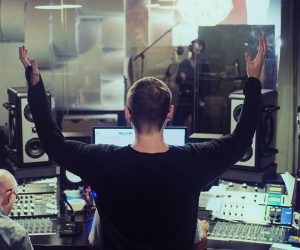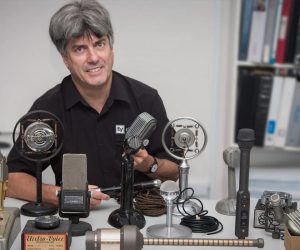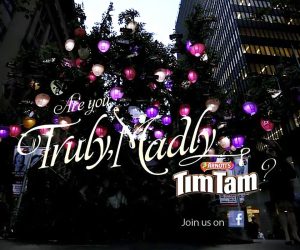
Last Word with Glenn Rogers
Glenn Rogers is the Managing Director of Allen & Heath, based in Cornwall, UK. Pictured is Allen & Heath‘s seminal System 8 studio console of the ’80s.
I started at Allen & Heath back in June 1983 as an R&D design engineer. We were an analogue mixer manufacturer. I remember at the time I insisted on getting a PC for my desk, and that was about the extent of our digital capabilities.
The company started life back in 1969. Allen & Heath had a great reputation for innovation. In the early ’70s Pink Floyd was touring with our custom-made quad mixer, complete with handcrafted panning joysticks!
Another example of early innovation was our MiniMixer, which was the first on the market to use transistor technology. People loved that mixer. When you’re striving to innovate there was an element of risk in those days. Customers loved what we did but had to put up with a certain amount of unreliability and foibles.
Even now I still hear from people who will complain about something that happened 40 years ago at some disastrous gig somehow involving an Allen & Heath console. People have long memories. It does remind me that you can never rest on your laurels. If things are going well, you still have to listen to your customers and be thinking about the next thing. You can’t have one bad day. If you’ve had a success you can’t sit and relax.
Allen & Heath’s first big break was with the System 8 studio console. That was followed by Sabre, which had a great run as a modular mixer with good sound and performance. It really tapped into the project studio explosion of the ’80s, integrating well with the 16-track tape machines of the day.
What’s the origin of our signature, super-light fader feel? It was back in the ’80s when people were sick of the stodgy and inconsistent faders of the time. We went searching for a reliable, consistent alternative and signed up with ALPS.
The first console that had ALPS faders was the CMC [which was also the first to use a microprocessor to leverage MIDI capabilities]. We’ve been with them ever since.
When ADAT came onto the scene, followed by PC software-based recording, we made an important strategic decision. We determined that with digital moving in so quickly, we would need to concentrate our efforts on live sound rather than the studio. It led us to release the GL2 [which combined front of house and stage monitor functionality into a single ‘dual function’ mixer — a big deal at the time], the MixWizard and the ML series [which put VCAs into the hands of a much larger group of audio people].

It follows suit that our next strategic move, the biggest decision we made, was from analogue to digital. We started work on digital back in 1995 with the Icon and DR install mixers. They were successful platforms that gave us the chance to learn digital. iLive was also good for us. It taught us lots about what we needed to do in the future and evolved as we were learning.
It’s all come together with dLive. Naturally the technology has moved on since iLive. We’re now 96k and the FPGA has given us greater bit depth. The DSP and processing… the system sounds great and that hasn’t gone unnoticed by our customers.
We really worked on our packaging as well. We’ve learnt that the packaging and presentation is half the story. You can have the best engine, but if you can’t match that with warm enjoyable workflow, then it remains an uphill battle.
Allen & Heath’s heartland is in the mid-range, great value market. That’s what we want to do best. Not so different from Yamaha in that regard. Affordable quality, rather than to be the top end or the mass market.
I think we’re also known and loved for our passion for the industry; rather than just doing the job. It’s about wanting to have a good sound quality and make it affordable. Make the equipment last and support it well. For instance, we’re famous for our fabulous spares department that goes back decades. We try to look after people and that helps strengthen the image of the brand.
New products are always a way forward and a challenge. Launching a new product is always like one day’s worth of euphoria. You talk to lots of people and the feedback comes trickling in — “that’s really good, but it’d be great if it did this”, or “why doesn’t it do that?”. You can’t please everyone, or include everything but making decisions about what features make the final design is what makes us successful.
Having our HQ in Cornwall is wonderful. It’s where we once used to manufacture. Now we fill the place with a huge R&D team. We have 45 or so R&D engineers beavering away, most of them on software. They get to play with some cool toys, allowing us to rapidly prototype new ideas. We’ve come a long way from those analogue-only days of the ’70s and ’80s, but the passion is still the same.
















RESPONSES